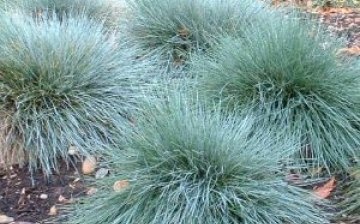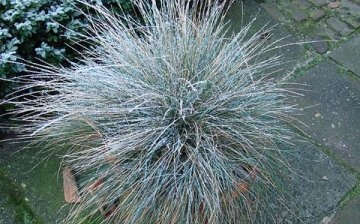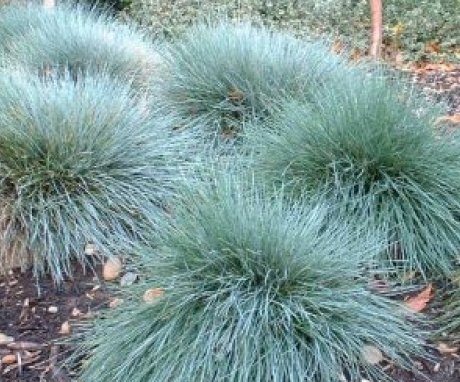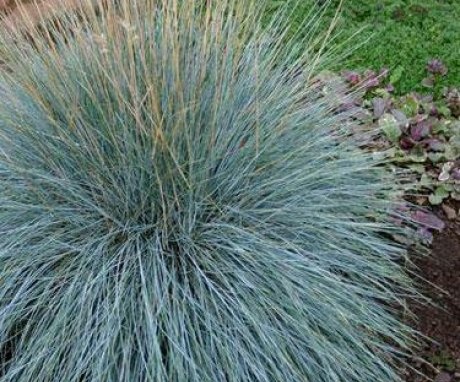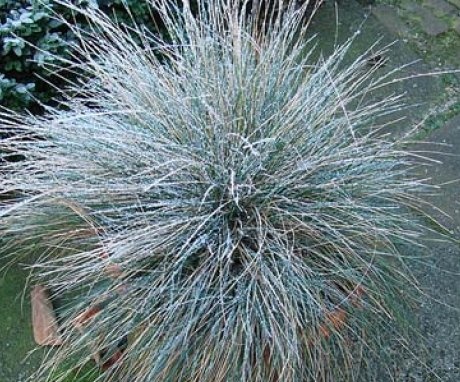Blue fescue - garden decoration
Decorative blue fescue is perfect for those gardeners who prefer plants of unusual species. She interested them with her lush spherical shape and narrow needle-like leaves of a bluish hue, which, even in winter, do not lose their attractiveness.
Content:
- How to use blue fescue correctly
- What care does blue fescue require?
- Breeding methods for blue fescue
How to use blue fescue correctly
Blue fescue in adulthood is a spherical hummock up to 35-40 cm high. Fescue is grown mainly to decorate rabatki, mixborders and rock gardens. Spherical blue fescue looks very impressive on flat lawns with low-growing shrubs, near small artificial reservoirs and around large single plantings. Thanks to its beautifully colored foliage, fescue is used in city parks to create spectacular flower beds and mosaics.
If you decide to plant fescue blue in your garden, you need to find an appropriate place for it, observing the rules for planting ornamental plants. The largest, dynamic plants with vibrant flowers and large leaves are planted first. In front of them, stunted plants are planted, introducing into the overall compositional picture in small groups or alone. They are inferior to large plants in height and expressiveness, but they bring a special charm and completeness to the overall composition. Likewise, blue fescue will serve as a wonderful addition to the overall picture of the garden.
What care does blue fescue require?
Fescue is not spoiled by conditions, but grows well in warm areas with abundant sunlight. If the plant does not have enough sun, the leaves will turn to normal green, and blue fescue will lose its natural decorative appearance. Fescue begins to bloom in June and blooms until the end of the season, releasing long gray-green peduncles-ears with a lilac tint.
Gardeners try to get rid of them in time, since the plant spends a lot of energy on their growth.
The soil fescue prefers light, breathable, low-nutritional and well-drained fescue. Areas with sandy loam soils are quite suitable. Most likely, this is due to its mountain-alpine origin.
Fescue does not tolerate drying out or waterlogging of the soil, but prefer moderate watering... In damp areas, some of the fescue bushes vomit and die off, and after 2-3 years the plant completely dies.
Fescue at the age of 3 years begins to be divided and planted. This should be done every 2 years. So the plant will have larger leaves with a richer color.
Blue fescue tolerates winter satisfactorily and can hibernate without special shelter. During severe frosts, some leaves of the plant may freeze, but in the spring and summer they quickly recover. In early spring, the plant is cleared with a special sparse-toothed rake and rid of the frozen and dry leaves.
Blue fescue diseases and pests... For the entire period of active growth, she may never get sick. This quality also attracts gardeners.
Methods for breeding blue fescue
Fescue can be propagated in different ways: seed, seedling and bush division.
Blue fescue seeds are easy to buy in the store, or you can collect it yourself from an adult plant.When flowering, fescue forms panicle inflorescences. The largest and most beautiful of them must be left for seed ripening. After the plants have faded, the spikelets are carefully collected, dried and seeds are extracted from them.
Fescue can be propagated by seeds, sowing them directly into the ground on May days, when the weather is warm or in late autumn before winter. Seeds are sown in nests, placing them at a distance of 18-20 cm from each other. The seeds are lightly sprinkled and moisturized. Germinating together in the nest, they eventually form a spherical fluffy hummock.
Fescue can be grown seedling methodplanting seeds in small boxes. For this, a lightweight substrate is better suited. Seeds are sown on the surface of the soil and are not sprinkled. They grow into the ground with their sharp tips. Crops are watered with settled water, covered with transparent glass and placed in a warm, sunny place.
After the seeds have sprouted, the box with the seedlings is moved to a bright, but cooler place to avoid stretching and depleting the seedlings. When the seedlings grow up, and the plant has two leaves each, you can transplant into separate pots for indoor plants, and plant them in a permanent place in the garden in May.
If you sow seeds for seedlings in mid-March, then with sufficient watering in May there will already be a strong and friendly seedling, which can be safely planted in the ground in a permanent place.
Decorative grains such as blue fescue can be used to create a variety of compositions in the garden. And it is also perfectly preserved in a dried form and is used to compose original winter bouquets.




